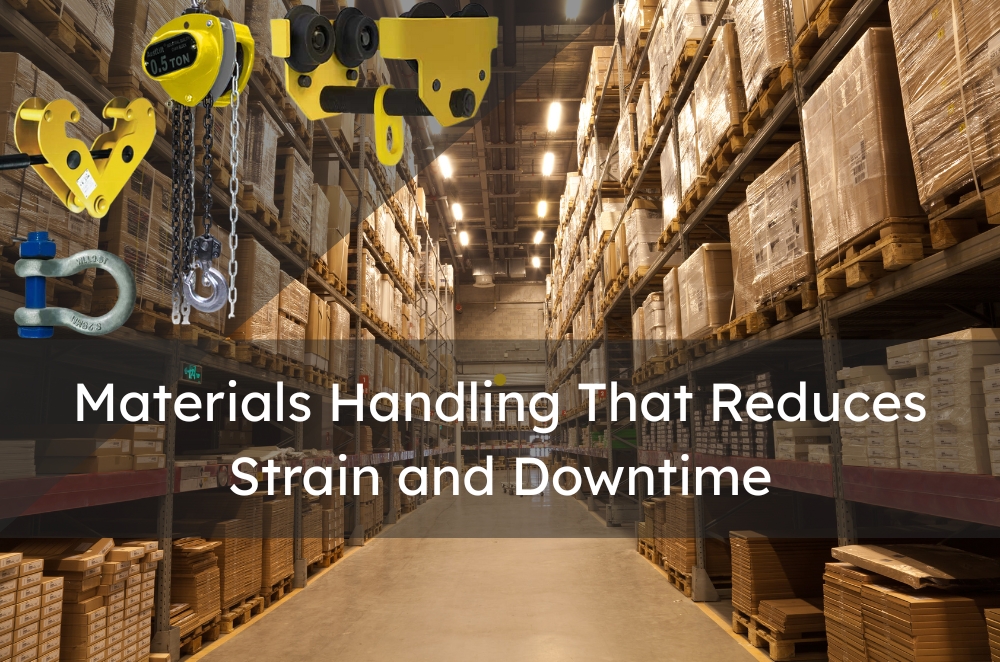Every workplace that moves goods—whether lifting, stacking, or shifting—depends on well-designed materials handling practices. When systems are inefficient or overlooked, the risk of injury grows, and so does downtime. Investing time and thought into workplace materials handling safety not only protects staff but also improves operational flow. The challenge isn’t just about moving heavy things; it’s about making each task simpler, safer, and more sustainable over time. Every crate, chain, and hoist should fit into a system that supports human safety and smart workflow. When these align, materials handling becomes less about muscle and more about precision, awareness, and collective responsibility.
How does materials handling improve safety and efficiency?
It lowers injury risk and speeds movement. Ergonomics and reliable gear do most of the work.
Start with task fit. Height-adjustable benches, trolleys, and hoists minimise awkward postures. Mid-shift equipment checks prevent cascading faults. A shared language of risk helps teams respond fast when something feels off. In practice, mapping tasks against fatigue points reveals where controls bite. Midway through that analysis, adopting ergonomic lifting methods often reduces strain and distraction, so attention stays on line-of-fire hazards.
- Stage loads to shorten carry distances
- Choose aids that eliminate twisting
- Rotate tasks to limit fatigue
- Log small hazards before they grow
How do you prevent rigging mistakes in lifting tasks?
Use rated hardware, inspect it, and plan the lift. Keep communication simple and clear.
Common errors include side loading, mismatched components, and unsafe sling angles. Tag damaged gear out of service and record defects. Toolbox talks catch shortcuts that creep in under time pressure. Mid-operation pauses are a feature, not a failure. They stabilise loads and avert escalation. Safety commentary often references ways to reduce common rigging errors in the context of time and injury risks.
- Measure angles and confirm working load limits
- Keep lift paths clear and signalled
- Assign one competent lift director
- Document inspections and retire gear on schedule
What is materials handling in a workplace?
Materials handling is the movement, storage, and control of goods. It protects people and keeps workflows consistent.
It spans manual tasks, hoists, conveyors, forklifts, and storage design. Good systems reduce strain, cut delays, and keep load paths clear. Policies should match site hazards, from load limits to pedestrian routes and traffic flow. Training, signage, and routine checks keep the whole system reliable without adding friction or fuss. It also relies on clear roles, documented lift plans, and housekeeping that keeps aisles open. Simple cues—hand signals, tag lines, colour-coded bins—cut confusion. Regular reviews catch drift and keep procedures aligned with real-world tasks and changing site conditions.
Conclusion
Good materials handling doesn’t make a fuss. It just quietly does the job. When design, training, and maintenance pull the same way, shifts finish clean and the work keeps moving. Trust comes from the small stuff: taped lift paths, slings set out straight, someone calling a pause when the wind kicks up. Fatigue isn’t bravado. It’s a risk you plan around. Gear fits the task, not the other way round. If something feels off, it usually is—stop, reset, carry on. Two minutes at day’s end to swap notes catches the niggles, tidies tomorrow, and slowly lifts the bar.





Comments